Proper Handwriting Grips
Tension ruins good handwriting. A relaxed handwriting grip reduces:
- Hand fatigue
- Maximizes finger range of motion
- Maximizes fine pencil control
Let’s start with the basic rest position. For example, lay your writing hand palm up on your desk. Notice all five fingers are slightly curled upwards. The muscles in your entire arm are relaxed – no tension. With your non-writing hand, simply squeeze any area of your resting forearm. Notice how the muscle is soft and relaxed.
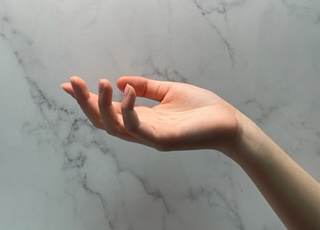
Let’s consider what happens when we put just a bit of tension on our hands.
While holding your resting forearm with your non-writing hand, from the relaxed position, straighten all five fingers on your writing hand. Straighten and relax your fingers several times.
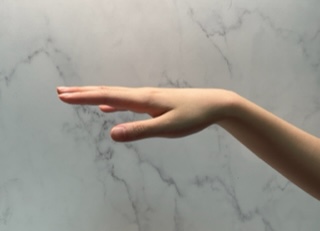
Gently feel the forearm muscles near the elbow as you straighten and relax your fingers. That’s the green and blue areas in the diagram below. Notice how the muscles tighten and relax corresponding to your hand movement.
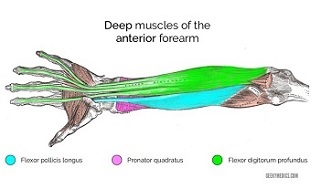
Next, clench and relax your hand repeatedly several times.
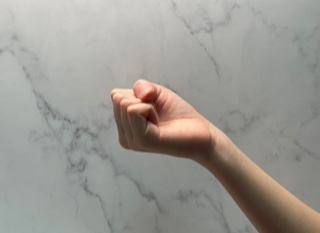
Gently feel the forearm muscles near the elbow as you open and close your hand. Again, that’s the green and blue areas in the diagram above. Notice how the muscles tighten and relax corresponding to your hand movement.
If you keep your arm muscles tight too long, fatigue sets in, especially when holding a pen or pencil.
How to Keep a Relaxed Grip
Avoid Leaning Forward. When writing, most writers have their ring fingers and little fingers curled and tucked underneath their palms. Lots of writers also have a habit of leaning forward and bowing their heads over their writing surfaces. Head bowing stems from our intense concentration to maintain smooth writing strokes. The closer we focus on our writing the closer we want to bring our eyes (our heads) toward the strokes.
However, as your head bows, your weight shifts forward onto the writing hand. Remember, most pencil grip styles have the ring finger and the little finger curled under the palm. Now, imagine placing your weight on those two fingers with your head bowing. Those fingers have to flex a bit more to support the unbalanced weight. The flexor digitorum profundus muscle flexes the ring finger and the flexor digiti minimi brevis muscle flexes the little finger (see the anatomy diagram above). Interestingly, those are the same muscles used to clench a fist. Is it any wonder why most writers get hand cramps when writing? You would too if you kept clenching a fist to support your weight.
Avoid Clenched Fists. A clenched hand causes muscle tension, which can quickly lead to muscle fatigue if clenched too long. Rather, the hand should be as relaxed as possible when writing. Relaxed handwriting have several benefits:
- Prolonged writing with less hand fatigue
- Smoother writing strokes
- Uniform letters, words, sentences, and paragraphs
Develop Good Writing Posture. Learn more about good posture.
Use either a Closed Grip or an Open Grip. Let’s break down the technical details to achieving relaxed handwriting. With either Closed Grip or Open Grip, start by holding a pencil with only the tips of your thumb, index finger, and middle finger about two (2) inches above the pencil tip. Smaller hands may need adjustment to 1.5 inches above the tip.
Closed Grip
When holding a pencil with a Closed Grip, the tips of the ring finger and the little finger face towards the palm. The knuckles of those two fingers anchor the writing hand to the writing surface.
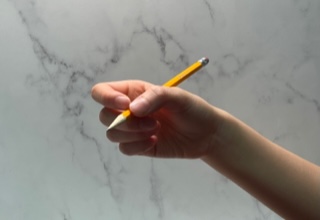
Open Grip
When holding a pencil with an Open Grip, the finger prints of the ring finger and the little finger should face towards the writing surface. Those two fingers anchor the writing hand to the writing surface. Moreover, they provide tactile feedback during writing so the hand can “glide” effortlessly across the writing surface. Essentially, the thumb, index finger, and middle seem to “float” over the writing surface as they lightly pinch the pencil.
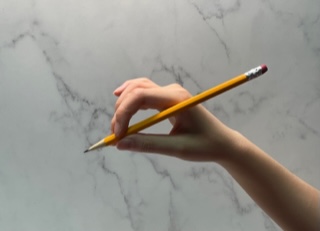
Use the Golden Cursive style of handwriting to make writing easy and effortless.